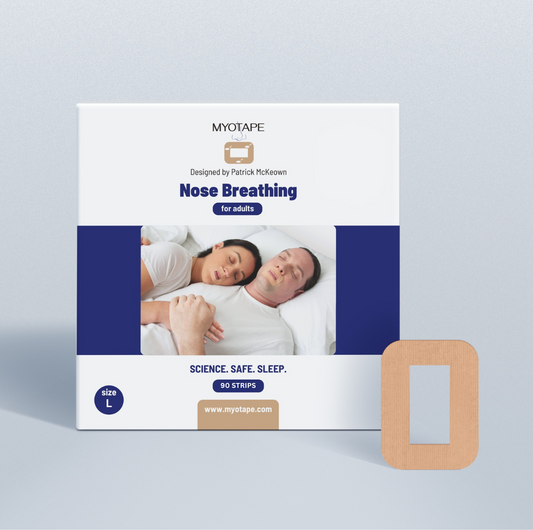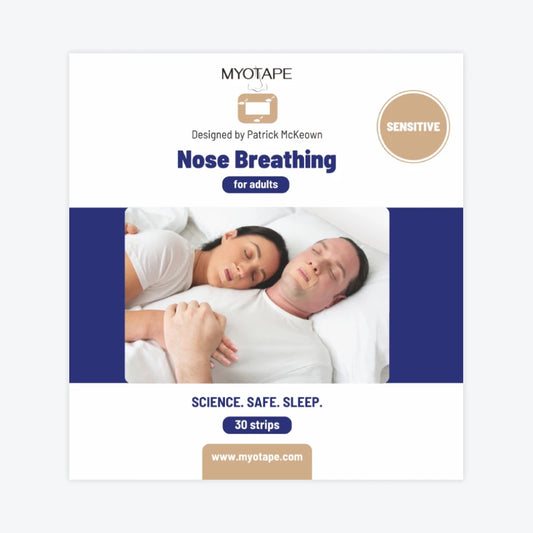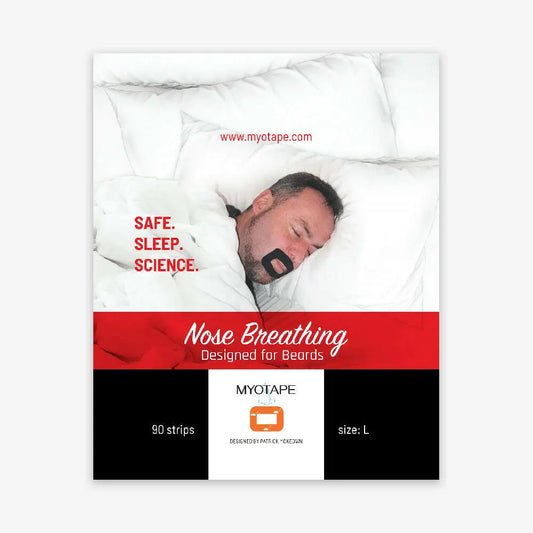Breathing through the mouth has been said to worsen oxygen saturation and can have serious health implications, especially for those with obstructive sleep apnea (OSA). Oxygen desaturation refers to a decrease in the level of oxygen saturation in the blood. Oxygen saturation is a measure of how much oxygen the blood is carrying as a percentage of the maximum it could carry. Normally, blood oxygen levels are between 95% and 100%. When oxygen saturation drops below this range, it indicates that the body is not getting enough oxygen, which can lead to various health issues.
A study published in the Laryngoscope journal revealed that mouth breathing is significantly associated with worse oxygen desaturation and a higher degree of upper airway collapse. This means that people who breathe through their mouths during sleep are more likely to experience severe drops in blood oxygen levels and more frequent airway blockages.
The research involved 95 patients diagnosed with OSA, selected for this study from May 2017 to May 2019. These patients underwent drug-induced sleep endoscopy (DISE), a procedure that allows doctors to observe the airway during sleep. The researchers used capnography, a technique that measures carbon dioxide levels, to determine whether patients were breathing through their mouths, noses, or both.
Key Findings from the Study
- Higher Apnea Hypopnea Index (AHI) Scores Among Mouth Breathers: The study found that the Apnea Hypopnea Index (AHI) scores, which measure the number of apneic events per hour, were significantly higher during mouth breathing. Specifically, the AHI scores were 52.15 for mouth breathers compared to 27.4 for nose breathers. This indicates that mouth breathers experience more frequent interruptions in breathing during sleep.
- Worse Oxygen Desaturation in Mouth Breathers: Mouth breathing was linked to worse oxygen desaturation. Oxygen desaturation refers to the drop in blood oxygen levels, which can be harmful over time. When the airway collapses, it prevents adequate oxygen from reaching the lungs, leading to lower oxygen levels in the blood.
- Upper Airway Collapse While Mouth Breathing: The study also found that mouth breathing was associated with a higher degree of upper airway collapse. This includes collapses in the lateral pharyngeal wall and the base of the tongue, which are critical areas for maintaining an open airway during sleep.
What Does This Mean?
Mouth breathing can lead to more severe drops in blood oxygen levels and increased airway collapses, making OSA symptoms worse. Oxygen desaturation can be harmful over time, as it means that the body and brain are not receiving enough oxygen.
When the airway collapses, it prevents adequate oxygen from reaching the lungs, leading to lower oxygen levels in the blood. In addition, this can result in symptoms like fatigue, cognitive impairment, and an increased risk of cardiovascular issues. This can result in poorer sleep quality, increased daytime fatigue, and a higher risk of cardiovascular problems.
The study found that mouth breathing was associated with a higher degree of upper airway collapse. This includes collapses in critical areas such as the lateral pharyngeal wall and the base of the tongue. These regions are essential for maintaining an open airway during sleep. When they collapse, it becomes difficult for air to pass through, exacerbating OSA symptoms and leading to more severe health consequences.
For individuals with OSA, it is crucial to promote nasal breathing during sleep. Nasal breathing helps maintain better oxygen levels and keeps the airway more stable, reducing the frequency and severity of apneic events.
There are two recommended ways that can help you. First is by learning to breathe better through breathing re-education. Enrolling in our online Buteyko Breathing Exercises course teaches you how to maintain nasal breathing at all times, improve oxygen levels, and stabilize your airway. This course is a product of Patrick McKeown, who is a recognized breath expert and scientist.
Secondly, you can learn more about MyoTape, an invention of Dr. Patrick; it is a scientifically backed mouth tape that is designed to help you maintain nasal breathing while sleeping, ensuring better oxygen levels and a stable airway. You can get mouth tapes for adults, for kids, and for sensitive skin.
References:
Hsu YB, Lan MY, Huang YC, Kao MC, Lan MC. Association Between Breathing Route, Oxygen Desaturation, and Upper Airway Morphology. Laryngoscope. 2021 Feb;131(2):E659-E664. doi: 10.1002/lary.28774. Epub 2020 May 30. PMID: 32473063. https://pubmed.ncbi.nlm.nih.gov/32473063/








